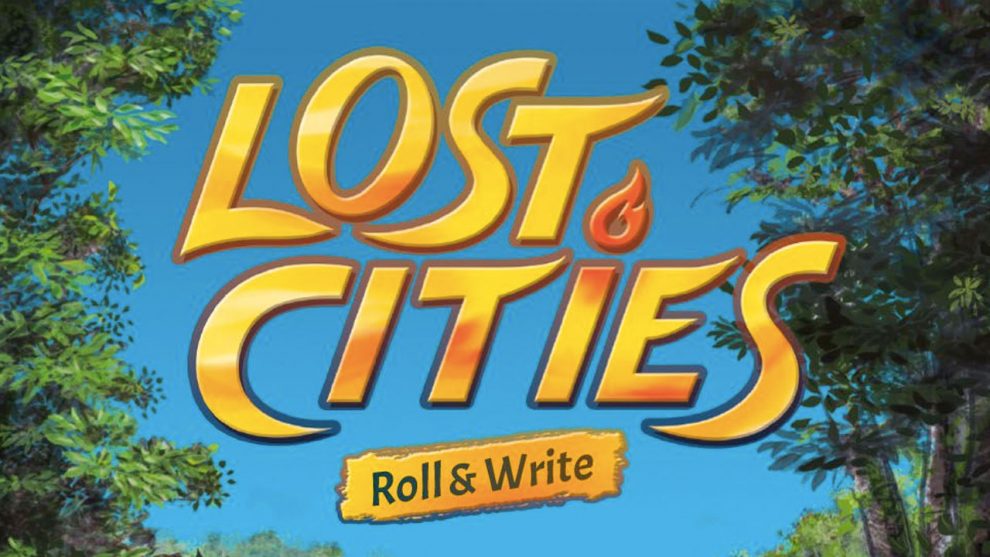Disclosure: Meeple Mountain received a free copy of this product in exchange for an honest, unbiased review. This review is not intended to be an endorsement.
Lost Cities Roll and Write (LCR&W) takes the strategic gameplay and “push your luck” elements of its namesake and distills them down into a quick, easy, and highly portable experience. At the start of the game, each player is given a sheet of paper from the pad along with a pencil (not included). Then a start player is chosen, handed the dice, and they roll them.
Once the dice are rolled, the start player chooses a pairing of a number die and a colored symbol die. The other players choose pairings of their own from the remaining unselected dice. Having selected their pairings, each player will add the selected values to their player sheets (or not – more on this later). Then this process is repeated over and over again passing the dice to the next player in line at the end of each round, who then becomes the new start player.
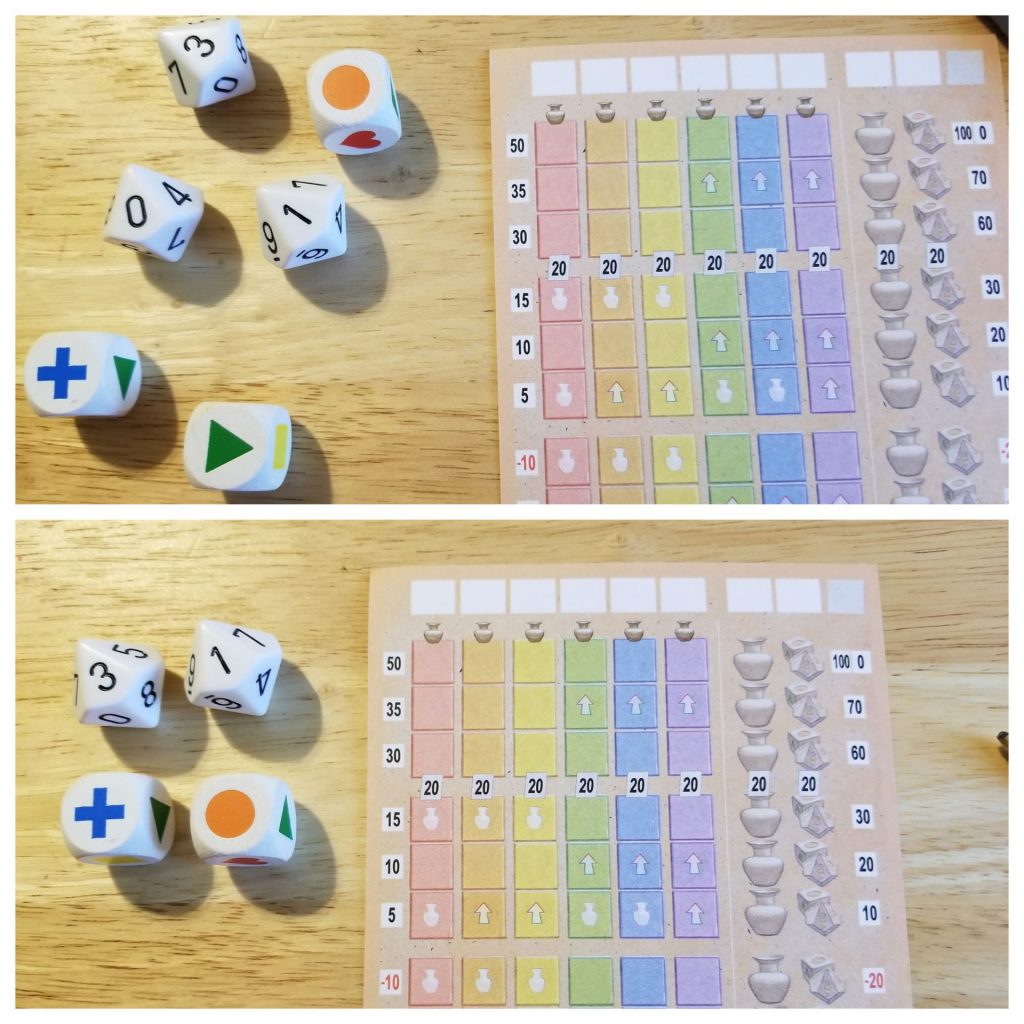
This continues until one of the end game conditions is triggered after which the players tally up their scores. The player with the highest score wins.
It’s a little trickier than it sounds, however.
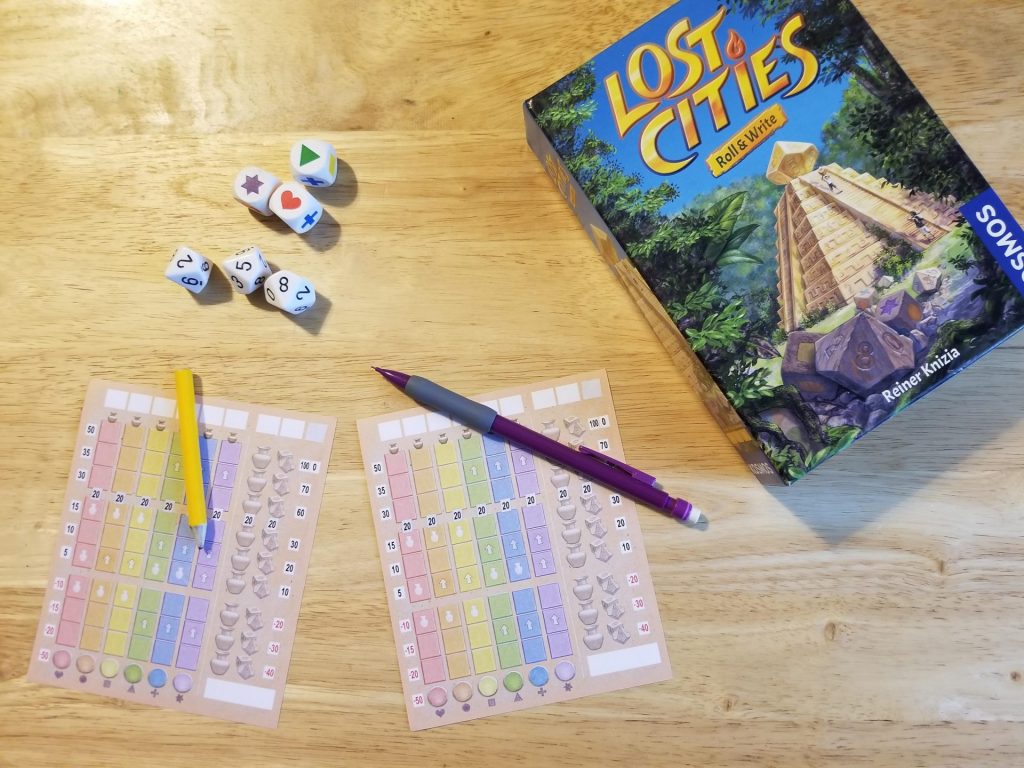
Most of the sheet is taken up by 6 different colored columns representing different expeditions. Each of these colors corresponds to one of the colored symbols on the dice (the symbols are a thoughtful inclusion for the color-blind among us). These expeditions are filled in from bottom to top following an easy rule: each number written in must be equal to or greater than the number written before it.
Running alongside the left of the sheet are a series of numbers beginning with -50 and working upwards to 50. These numbers tell you how much each expedition is worth at the end of the game, depending on how high up the column you were able to progress. For instance, if you reach the top of an expedition, it’ll be worth 50 points at the end of the game.
The -50 corresponds to a doubler which can only be filled in with a 0 (and this can only be done before any other numbers are written into that expedition). This functions similarly to the handshake cards in the Lost Cities card game. It doubles whatever your final value is for that expedition—a risky move that could cost you a lot of points if you’re not able to capitalize on it. For instance, if you write in a 0 and never add another number to that expedition, it’s going to be worth -100 points (that is, -50 doubled) at the end of the game.
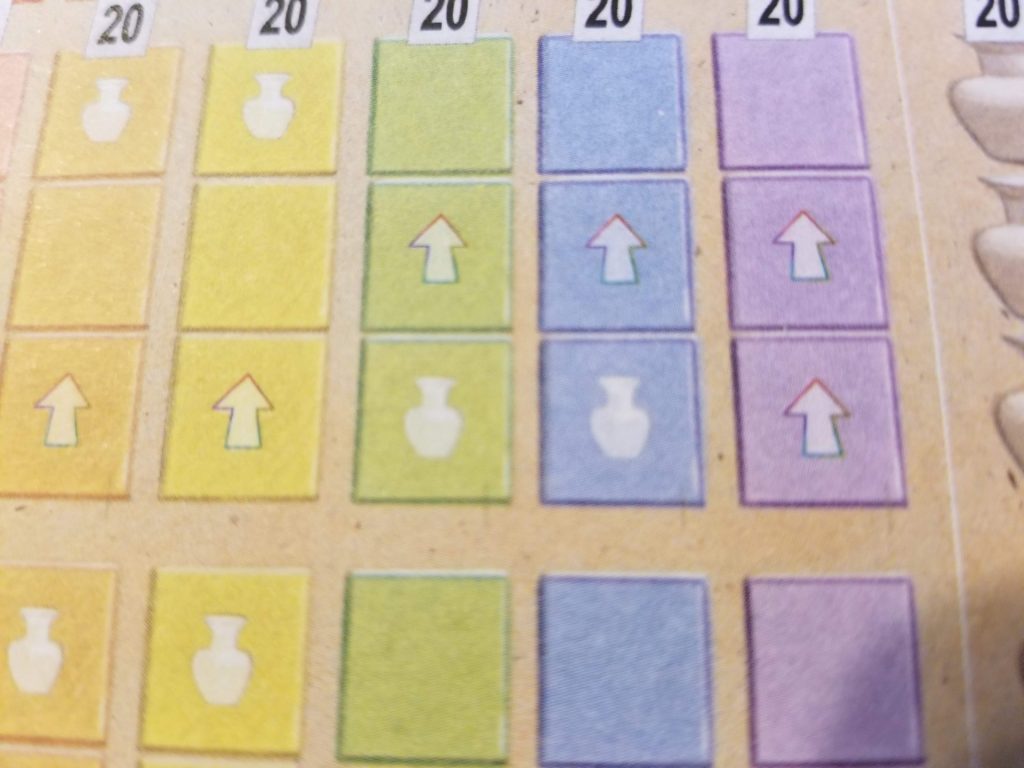
As you fill in Expeditions, you’ll encounter a few bonuses along the way. One looks like an arrow and it allows you to write whichever number you just added to the expedition to any other expedition (following the placement rule described earlier), even the exact same expedition.
Another symbol looks like a clay pot. This corresponds to the artifact column on the right side of the sheet. Functionally, it’s just like an expedition (only without a doubler). The more artifacts you fill in, the more points the column will be worth at the end of the game. This column tops out at 100, so reaching the top of it is highly desirable. However, this is not true for the column to the right of this one where you mark off your rejected dice.
Whenever you’re tasked with selecting a pairing of a die and a symbol and there aren’t any you want to take or can take, you’ll fill in a space in the rejected dice column. But you’ve got to be careful doing this. Ending the game in the penultimate space will score you 70 points, but reaching the top of the column will earn you nothing.
About halfway up the column (and this is the same for every other column on the sheet), there is a bridge with a 20 printed on it. If you are the first person to cross a particular bridge, then you draw a circle around it and everyone else that did not cross that bridge during this round draws a slash through it. Every circled bridge is worth an extra 20 points at the end of the game.
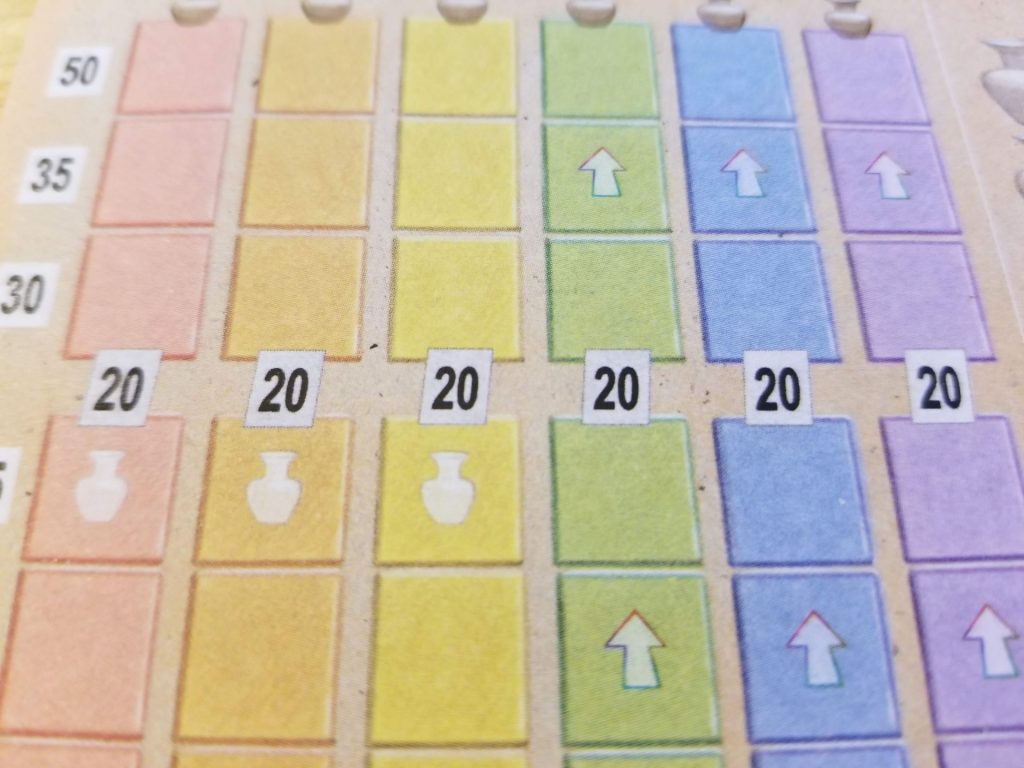
And, speaking of the end of the game, once someone crosses the 8th bridge, the game comes to an end at the end of that round. Then players tally up their points and the highest score wins. The other end game trigger is if every player has reached the top space of the rejected dice column.
Thoughts
The Lost Cities card game has long been one of my favorite 2-player games. Its simplistic gameplay coupled with the very tough choices it forces you to make at every turn are the perfect recipe for success. The only complaint I ever had about the game was that, being strictly 2-players, there was no way for me to be able to share the joy with more than one other person at a time. Then I discovered Keltis, a full-fledged board game that’s like Lost Cities on steroids. The only problem with Keltis, though, is that, being a large board game, a lot of the simplicity that makes Lost Cities so easy to jump right into is lost.
LCR&W has the benefit of maintaining that simplicity while also allowing for more players to join in on the fun—the best aspects of each title. And this makes me happy.
One of my favorite aspects of the original Lost Cities is just how tough the decisions you’re forced to make in the game are. Every card you discard is a card your opponent could use. Wait too long to start or add to your expedition and it could wind up costing you a lot of points. Can you? Should you? Will they or won’t they? It’s a guessing game based on extremely limited information sprinkled with a healthy dose of crossing your fingers and praying for the best.
LCR&W is the same cat and mouse game writ large, writ small. Like Willy Wonka’s Three Course Dinner Chewing Gum, Reiner Knizia has managed to condense Lost Cities into a much smaller package while still retaining the flavor that makes Lost Cities so delicious. If anything, the flavor is even more intense. In Lost Cities, there are a finite amount of cards, so after a while, you’ve got a pretty decent idea of what could come up next. LCR&W is pure chaos, every roll of the dice playing out in slow motion tension. You never know what’s going to roll up next.
I never imagined that a roll and write version of a game would ever surpass the larger game that inspired it for me, but Lost Cities Roll and Write has done it. It’s got everything I love about Lost Cities and then some. The price is right. The size is perfect. It’s highly approachable. It’s simultaneously easy, yet challenging. And now I can share it with even more people. What’s not to love?


